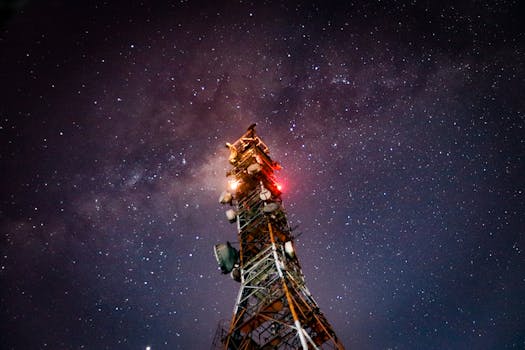
The Rise of Mega-Constellations: Latest Updates in Satellite Telecommunications
Mega-Constellations is the focus keyword we will be discussing in this article, as the rise of mega-constellations is revolutionizing the field of satellite telecommunications. With thousands of satellites being launched into space to provide global internet coverage, this technology is set to change the way we communicate and access information. In this article, we will explore the latest updates in satellite telecommunications and the impact of mega-constellations on the industry.
The concept of mega-constellations was first proposed in the 1990s, but it wasn’t until recently that the technology became feasible. With advancements in satellite design, launch technology, and signal processing, it is now possible to launch thousands of small satellites into low Earth orbit (LEO) to provide global internet coverage. Companies such as SpaceX, OneWeb, and Amazon’s Kuiper Systems are leading the charge in this field, with plans to launch tens of thousands of satellites in the coming years.
How Mega-Constellations Work

Mega-constellations work by launching a large number of small satellites into LEO, which are then connected to form a network. Each satellite is equipped with a transceiver that can communicate with other satellites and with ground stations. This allows data to be transmitted from one satellite to another, creating a network of interconnected satellites that can provide global internet coverage. The satellites use a variety of frequencies, including Ka-band and Ku-band, to transmit data, and they are designed to be highly efficient and reliable.
The benefits of mega-constellations are numerous. They can provide internet access to remote and underserved areas, where traditional fiber-optic cables are not feasible. They can also provide backup connectivity in case of natural disasters or other outages, and they can enable new applications such as IoT (Internet of Things) and autonomous vehicles. Additionally, mega-constellations can provide a new level of security and resilience, as the network can be designed to be highly redundant and fault-tolerant.
Challenges and Concerns

Despite the many benefits of mega-constellations, there are also several challenges and concerns. One of the main concerns is the risk of space debris, as the large number of satellites in LEO can increase the risk of collisions and other accidents. There are also concerns about the impact of mega-constellations on the environment, as the launches and operations of the satellites can generate significant amounts of waste and pollution. Furthermore, there are concerns about the regulatory framework, as the industry is still in its infancy and there are many questions about how to regulate and govern the use of space.
To address these challenges, companies and governments are working together to develop new technologies and regulations. For example, SpaceX is developing a new satellite design that is more efficient and reliable, and that can be easily de-orbited at the end of its life. OneWeb is working with regulators to develop new guidelines for the use of space, and Amazon’s Kuiper Systems is investing in research and development to improve the sustainability of its satellites.
Conclusion

In conclusion, the rise of mega-constellations is a significant development in the field of satellite telecommunications. With thousands of satellites being launched into space to provide global internet coverage, this technology has the potential to revolutionize the way we communicate and access information. While there are challenges and concerns, companies and governments are working together to address these issues and ensure that the benefits of mega-constellations are realized. As the industry continues to evolve, we can expect to see new applications and innovations emerge, and we can expect the impact of mega-constellations to be felt for years to come.
See more:







